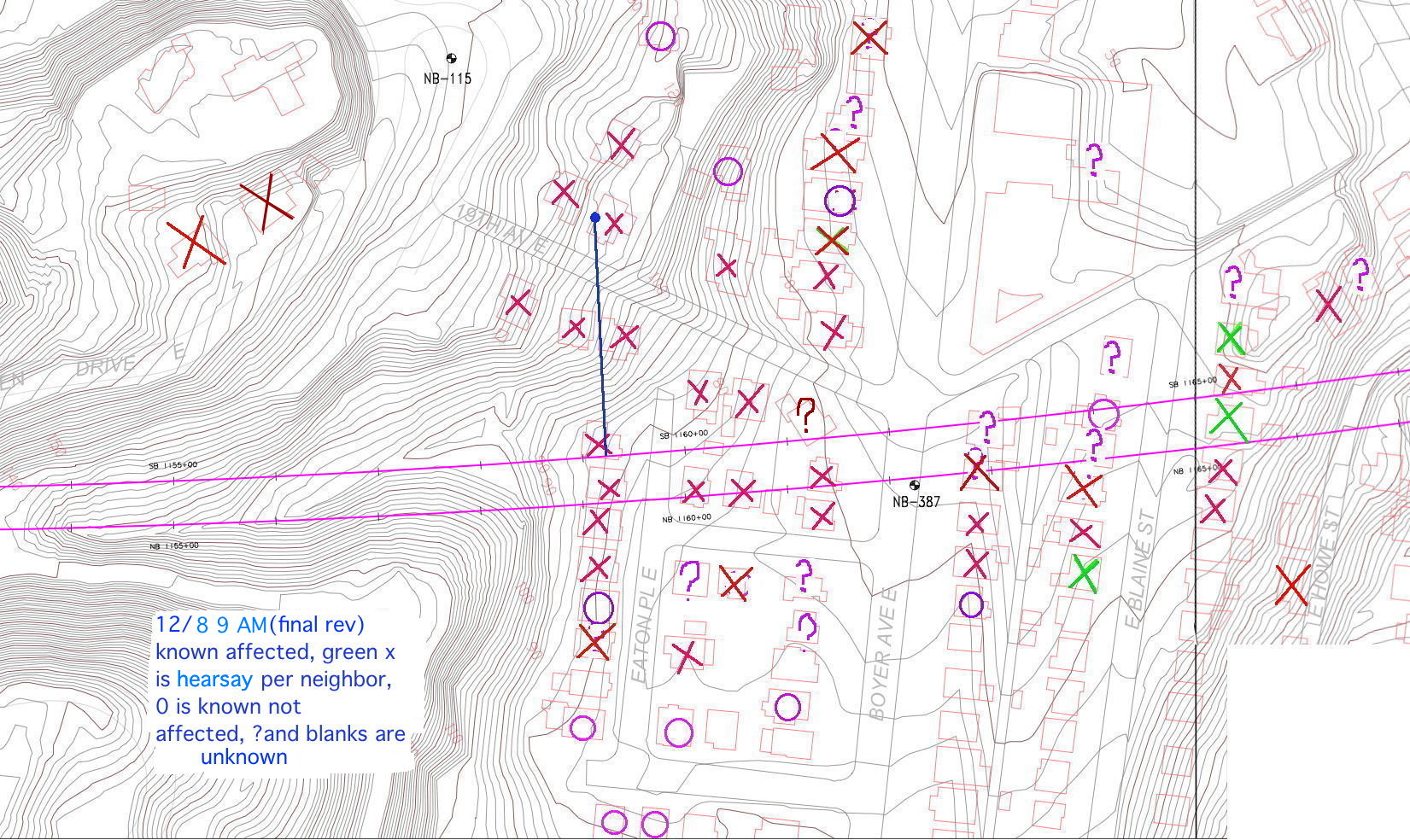 Frustrated by Sound Transit’s response, Montlake resident Jeff Parke has mapped the problem
Frustrated by Sound Transit’s response, Montlake resident Jeff Parke has mapped the problem
As a massive tunnel boring machine begins its path beneath Volunteer Park — and some of the most expensive residential real estate along Sound Transit’s light rail U-Link route — the Montlake resident who has surveyed, mapped, measured and documented the noise and vibrations that more than 60 households in the area say they feel and hear has a message for his neighbors up the Hill.
“If I were on the other side of Volunteer Park,” Montlake resident Jeff Parke told CHS, “I would say, ‘Wow there may be something about about the trains or tunnels that creates amplification.”
But, according to federal environment impact reports completed to win approval of the project, Capitol Hill’s real “Montlake Murmur” are of worry isn’t Volunteer Park. The only questions are will predictions of possible noise and vibrations on Broadway come true? And, will anybody notice?
In recent weeks, Parke has been a leading voice among neighbors who are complaining to Sound Transit about noise and vibrations in Montlake that many say are keeping them up at night and causing them stress as they worry about damage to their homes and a possible future where light rail tunnel noise is a permanent part of life around the Boyer Basin.
Sound Transit says the noise and vibration is a surprise. Kind of.
“We’ve been surprised by the impacts in the Boyer Basin and Shelby/Hamlin neighborhoods because we finished two one-mile tunnels under Beacon Hill with no noise or vibration issues and more recently wrapped up our first tunnel between Capitol Hill and downtown with no noise and vibration issues,” Sound Transit spokesperson Bruce Gray said. “All of that work has been in very similar soil conditions.”
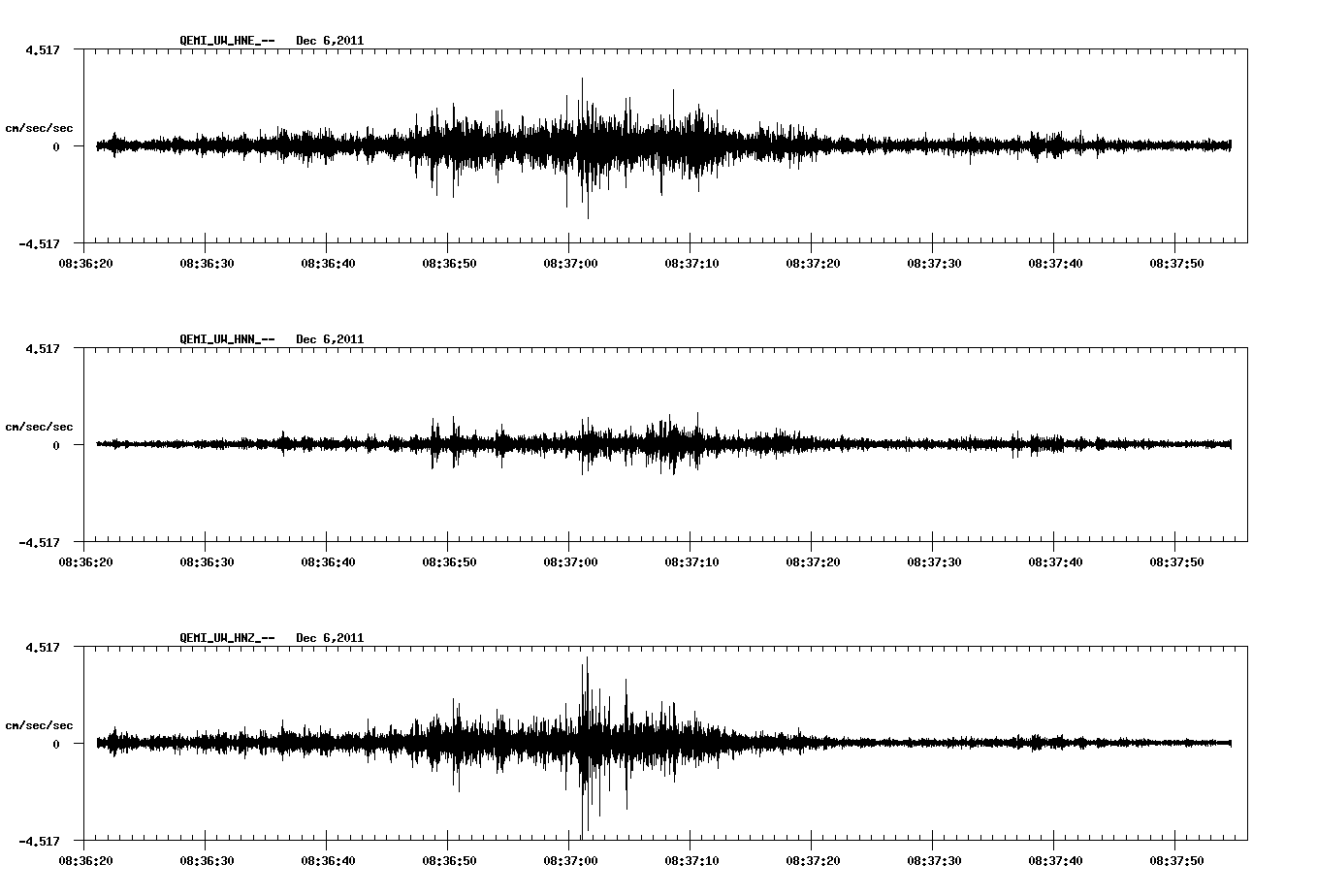 Measurements from Interlaken from the Pacific Northwest Seismic Network
Measurements from Interlaken from the Pacific Northwest Seismic Network
But Sound Transit is also telling residents of the area impacted by the noise and vibrations that, yeah, we said that might happen.
In email, Gray pointed CHS to the final 2006 Environmental Impact Statement for the project:
…the EIS finished in 2006 did note some potential for impacts from ground borne noise and vibration at a couple locations along U-Link, including the Boyer and Shelby/Hamlin areas, so this hasn’t been a complete surprise
An EIS is a detailed report on predicted impacts to the environment required of federally funded projects. Here is some of the language Sound Transit used in the approved report:
Finally, ground-borne vibration from construction activities can sometimes also produce ground-borne noise. Ground-borne noise is a rumbling sound caused by the vibration of room surfaces. The relationship between the level of ground-borne vibration and the noise it may produce depends on the frequency content of the vibration source, stiffness of the soil, and the acoustical properties of the receiving room. Typical human perception of ground-borne noise occurs at approximately 75 VdB, which equates to an interior noise level of approximately 40 dBA for average soil conditions. Construction activities in stiffer clayey soils or rock has the potential to produce noise levels of 45 dBA with vibration levels of 65 VdB. Ground-borne noise may be noticeable at times at locations where the tunnel depth is less than 100 feet; however, the actual level of ground-borne noise will depend on the frequency of vibration, geological strata between the vibration source and receiver, and acoustical conditions of the receiving structure.
The EIS also detailed where on the route (the full map is embedded below) engineers predicted the noise and vibrations could occur. Sounds like they nailed it in Montlake:
Construction for all Segment B route tunnels, vent shafts/TPSS, and stations would involve the vibration-causing factors and impacts described above. Locations in Segment B where tunnel vibration could be an issue because of tunnel depth include the University of Washington Station on Montlake Boulevard; residences along E Hamlin in the Montlake Neighborhood; within 300 feet north and south of Boyer Avenue; and near the Capitol Hill Station along Broadways Avenue between E Thomas Street and E Howell Street. Vibration is also likely to be noticeable near the cut-and-cover construction area along Eastlake Avenue.
In Montlake, some homes directly above the tunnel route in the problem area aren’t affected by the problems at all while homes nowhere near it have some of the worst vibrations.
So, are you ready for a little rattle and roll, Broadway? According to the EIS, the area around Volunteer Park probably doesn’t have much to worry about when it comes to the irritations the Boyer Basin is facing. But for homes, apartments and businesses along a short stretch of Broadway leading to the station, the Montlake Murmur may be coming for you once the first tunnel passes beneath and reaches the station construction area in coming months.
Despite the predictions, Sound Transit is scrambling to find a solution in Montlake. CHS reported on the noise and vibration issues from underground tunnel construction in November. In a notice mailed to the community last week, Sound Transit said some of its more significant noise mitigation efforts that have been delayed will finally be put into place:
The first delivery on our special order of rubber pads will arrive on Monday, 12/19. The contractor plans to stop TBM operations for two days and focus on the pad installation in order to get the mitigation complete as soon as possible. Work on the cross-passage will not interfere with the pad installation, so it will continue through the holidays as planned.
Once the pads are in place, ST’s vibration consultants will be conducting another round of vibration and noise monitoring to evaluate the effectiveness of the pads. The analysis takes some time and we do not expect to have a final report until the second or third week of January.
TBM supply trains continue to operate at reduced speeds. As with any operation that involves human beings, there is some margin of error in adherence to standards. We are working with our contractor and the locomotive operators to stress the importance of operating at reduced speed, and to improve consistency among the operators.
Some of you have been asking questions about the extent of sound transit’s program to monitor the noise and vibration levels in the neighborhoods originating from the tunnel mining operations by ST. I’d like to reassure you that we take the problem seriously, have collected sufficient data to help us understand the impact, and develop several means of reducing construction vibration.
ST’s vibration specialists, Wilson Ihrig & Associates, measured the vibration in both indoor and outdoor settings in both Shelby Hamlin and Boyer neighborhoods on different occasions and have compared their findings to independent seismic readings provided by Jeff Parke and USGS. The seismic data from Dr. Parke’s location is generally consistent with ST consultants’ measurements and is reviewed regularly by ST’s construction management team. Sound Transit is confident we have identified the source and magnitude of the problem.
Parke tells CHS that he believes Sound Transit should be given the benefit of the doubt and hopes the agency’s contractors are successful in stemming the problems with the supply train and tracks that officials believe are causing the issues. But he is also frustrated with the bureaucracy that seems to have a difficult quickly translating its public messages to changing the way its contractors execute the plan.
Parke said one example of this disconnect were the messages around a decision to slow the supply trains running in the under-construction tunnel in an effort to cut down the noise and vibrations. Parke said his measurements showed no such slow-down in the weeks following the Montlake community meeting. In fact, he said, his recordings showed that the trains actually went faster.
“I think they’re all nice human beings working in this bureaucratic [messed] up network,” Parke said of the situation.
The frustration has lead the analytic Parke to try to create an unemotional set of evidence to push Sound Transit to do more for him and his neighbors. In a survey he ran to collect feedback from residents in the area, more than 60 respondents reporting hearing or feeling vibrations “from the ground below” on their property:
Of 82 validated survey participants, 77% hear or feel vibrations coming from the ground below them. Of those, 94% are certain these subterranean vibrations emanate from the Sound Transit construction trains traveling back and forth 90 feet or more below their homes or businesses.
Here are some breakout answer from where the problem seems to be focused in the Boyer Basin:
What are they hearing and feeling? Here are a few verbatims:
Regardless of how much noise and shaking is going on in Montlake, the survey shows a perception problem in the neighborhood. If this week’s work to reduce the complaints doesn’t cure it, however, it’s unlikely Sound Transit will do more than look into other possible solutions. Construction noise, after all, is part of the plan. Here’s another passage from the Environmental Impact Statement for the project:
Construction noise and vibration may affect residences, University of Washington research facilities, andother uses of property along the corridor, particularly in station areas. No exceedance of any state or local noise control ordinance is projected at any of the staging areas or construction sites as long as mitigation suchas noise walls and/or other measures are implemented.
While we haven’t heard from the state yet, the City of Seattle’s DPD says it has received complaints but won’t be acting on them. “We have conveyed that the noise generated by the underground trains on the tracks is not addressed under Seattle noise regulations,” a representative told CHS in November.
For some in the city, the situation falls into a long line of Montlake community complaining — from the original 520 bridge to today’s light rail tunneling. Parke said maybe it’s true. “I live here because I love this neighborhood,” he said. “Maybe we are a little more persnickety.”
“This is ruining the lives of people at the surface,” Parke said. “There has to be a better solution.”




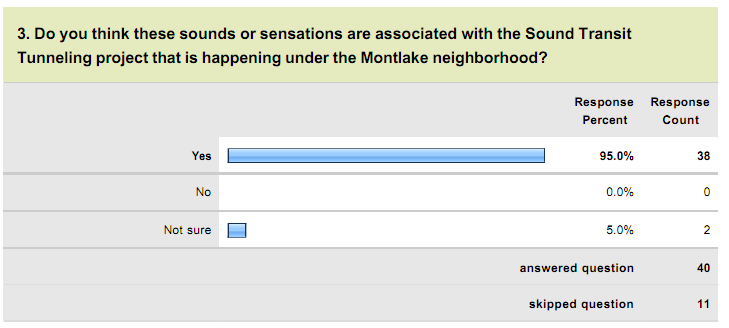
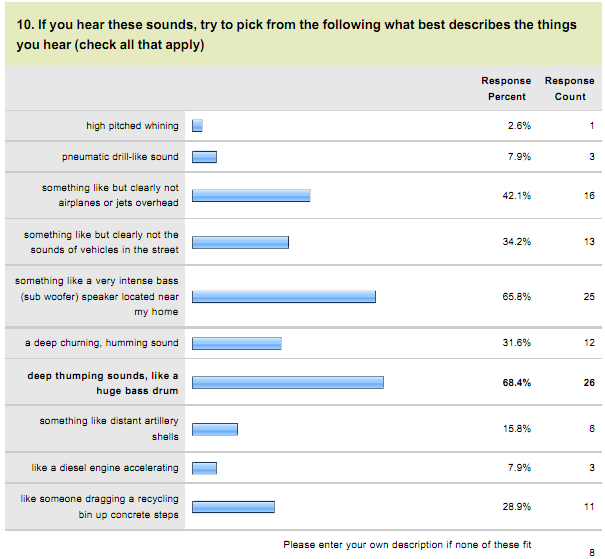
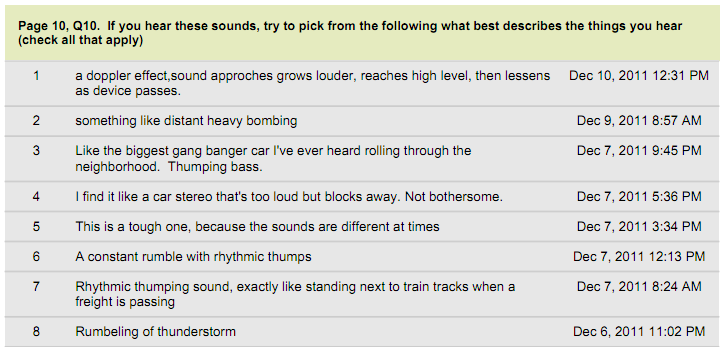
Mr. Parke may need to “get a life”. This is called “construction”.
I’m sure that if there were a real problem, the U.W. researchers and
labs would have complained. In the meantime, he’s driving up the costs
of the tunnel. Another case of “Montlake Navel Fixation Syndrome”.
Parke obviously has led a pretty charmed life if vibrations from construction are ruining his.
The noise under Montlake is caused by the tunnel contractor’s poor quality train track that uses steel ties bolted at their two ends to the tunnel floor. These steel ties are like tuning forks banging against a big concrete echo chamber with each train pass. The fill soil and “basin” topography around Boyer Ave worsen the effect.
Contractors for Sound Transit’s other tunnels under Beacon Hill and Broadway-Downtown installed train tracks on rounded wooden ties (as seen in a previous CHS blog post) which do a great job of dampening noise and vibration. For whatever reason, these weren’t used under Montlake and now ST is scrambling to install rubber pads. Let’s hope it works! Montlake neighbors overwhelmingly support light rail.
The tunnel doesn’t go under the UW campus so “I’m sure” that U.W researchers have no reason to complain. If the contractor had built a proper train track like on other tunnel projects, this wouldn’t be a problem.
i think we should spend another billion dollars to study the issue instead of building desperately needed transportation infrastructure.
/sarcasm
I think we should build a train through your bedroom.
cutting down all those trees to make temporary railroad ties isn’t too planet friendly
I have a four month old at home, so I understand the suck that is sleep deprivation, but seriously, “ruining people’s lives”? It’s a temporary inconvenience.
Whine about 520, whine about light rail, whine about a second Montlake bridge, whine about Husky Stadium, whine about views, whine about the rain, whine about nearly everything.
This is temporary. Time to turn a deaf ear…
The tunnel will indeed go under campus up to Brooklyn and 43rd/45th. Please check your facts.
I’m really impressed with how thorough CHS is with items some might see as trivial in their lives as this one. In the last few weeks I’ve met a mother whose kids have been awakened at night, wondering what “that noise” is. I’ve been shaken awake in the middle of the night. I’ve met many people who have items rattling around in their house at all hours. This lead to the survey to attempt to document this, because Sound Transit sure didn’t seem to be. Skeptics should look at the full results at http:/seattlevet.net/stts There are many people reporting sleep problems. If it is your or someone you care about losing the sleep, you don’t find this so trivial.
One correction – Sound Transit promptly announced mid-November they took sleep loss seriously and thus would require the trains to go slowest speed at night. The seismic sensor doesn’t see the ones that do go slower, nor do they wake residents up as much. So, it was clear that some mitigation was achieved (not the way this article reads). Yet, the QEMI sensor shows that some trains continued to go normal speed (about 6 MPH), as well as the occasional train going top speed (about 12 MPH). On the poor track laid down, that leads to a lot more ground vibrations. Point being: It is discouraging when ST says they will do something and it becomes clear they can’t quite accomplish what they said they would.
I dislike the tone created in this article and some’ comments that somehow Montlakers feel more entitled than other parts of Seattle, Puget Sound or the Pacific Northwest. If anything, that ends up creating a sense that some group feels superior to others, and seems to elicit, a bit easily, behavior hardly worth feeling superior about.
Jeff P.
Neither does cutting down Christmas trees. Let’s end christmas!
Trees come from tree farms so cutting them down is part of the plan.
Clearly that is exactly analogous to what is happening here.
Nope, you are wrong @caphillmax. The tunnel this article is about connects Husky Stadium and Capitol Hill. In a few years an entirely different tunnel dug by an entirely different machine will be built under the UW campus.
I hate to break it to you but your four year old is ruining other people’s lives.
The tunnel is much shallower in Mountlake, like less than 20ft in one spot.
I’ve never done one of these calculations before, but if that’s a peak motion of 5 cm/s/s at about 30 Hz, I’m guessing that’s about 0.025 cm/s peak velocity, or 0.01 inches/s.
Which is 86 VdB ( http://www.maintenanceworld.com/Articles/DLIEngineering/What), or well above the 75 VdB which is the level for perceptibility in the ground, and a factor of 10 more motion than the 65 VdB claimed to be the result of construction activity. Perhaps quite noisy indeed.
I’m curious what a qualified engineer would conclude from the measurements.
@FactCheck. Nothing in my statement is false. Regardless, what is clear is that Montlake is full of whiny crybabies with an entitlement complex.
This is construction on a major infrastructure project, one that has been badly needed for years. It’s time for Montlake residents to suck it up, put on their big-boy pants, and deal with some temporary noise. By the article’s (and Mr. Parke’s) own admission, the complaining has already caused tunneling to stop for two days.
I agree. I couldn’t give a rat’s ass how much money those people have. With VERY few exceptions, the people who live there CHOSE to be there knowing there was a highway and that there could some day be a rail tunnel through. Hell, knowing 40 years ago there should have been a north-south freeway running through the area should be an indication they might get a little noise from time to time.
They need to suck it up, stop being NIMBYs and STFU.
Yes…but, as the tunnel heads south across Capitol Hill, towards the station, won’t it become more and more shallow? And therefore a greater chance of noise/vibrations from about E Garfield St to the station?
I live on E Thomas St and am a little worried I might have what some of the Montlake residents have been experiencing. I can accept it, but would rather not have to.
CapHillMax,
Folks in Montlake support light rail and are thrilled to have it coming to our neighborhood. We’re emphatic IMBYs, not NIMBYs! Mr. Parke’s survey of impacted residents still shows them to support the project despite experiencing train rumbling. When trains wake people up in the middle of the night, every night, they’re going to speak up. We’re working with Sound Transit to resolve the problem and they have done a great job so far. They took us on a tour down into the tunnel and TBM – it was the coolest thing I’ve ever seen.
I was fortunate to be invited by ST to tour the tunnel a couple of Saturdays ago. One thing the tour brought into focus is how awful the temporary track being used is. So much so, that all of the mitigation measures being done (besides the unsuccessful one of slowing down the trains) have to do with eliminating (in an after-the-fact manner) metal-to-concrete coupling of huge train loads (like 130,000 lbs) via crooked and uneven track directly to the concrete walls of the tunnel. This is a contractor-specific issue. The contractors for the Beacon Hill and Capitol Hill-downtown routes chose kinder, gentler approaches to their temporary track. From what I’ve seen, ST is wearing kids gloves in trying to guide the contractor regarding this issue; they need public encouragement to ramp up matters to gain more control over it.
If this contractor continues to use this sort of track along the entire route, and choices to improve it are only made if enough people on the surface complain, I’d advise people to not ignore it if it becomes bothersome. In my opinion, it doesn’t have to be this way – other routes did it differently without the surface disturbances.
We all own a piece of this tunnel. I asked ST officials to contemplate what these bangings must be doing at the source. I.e. what is the pound/sq.in. impact being made at the actual ties of this track to the tunnel wall? Is that dangerous to the tunnel wall itself? It must be a huge impact down there to vibrate my house 300 feet away. ST officials didn’t want to talk much about that question and were quick to assure me everything must be just fine with the tunnel wall, and, if there was actual damage it wouldn’t matter much since a new floor is poured on the tunnel prior to installation of the final track for real passenger trains. That answer didn’t necessarily lessen my concerns, but then, I like real data.
It is another reason I think it important that we all ask ST to instrument vibrations themselves, in the tunnel and on surface locations where it makes sense to do so. Stop taking the approach of not doing anything unless people complain. And then only looking at problems in the homes of the complainers.
If they had their own vibration sensing equipment in place, they could easily monitor things at the source and surface, and could provide ongoing appropriate vibrational guidelines to the contractor regarding train speeds and track conditions. This track is clearly designed to be just functional, not straight or even, and there is no way it won’t get worse with wear as these trains continue to carry large loads of tunnel wall sections back and forth for the next year.
Why does ST want to set this up so that the feedback loop for doing this temporary track right is left to regular folks on the surface? In a complex engineering project, people are your worst sensors of things that are really just physics.
I’m not sure why the article says the felt vibrations are only “kind of” a surprise.
The salient remark in their report is: “Construction activities in stiffer clayey soils or rock has the potential to produce noise levels of 45 dBA with vibration levels of 65 VdB. Ground-borne noise may be noticeable at times at locations where the tunnel depth is less than 100 feet.”
The tunnel, if can read the small figure from the CHS ( http://capitolhillseattle.com/2011/07/05/surface-monitoring/) properly, has the tunnel deeper than 100 feet under Boyer, and the noise is louder and certainly noticeable. One might guess that where the tunnel is shallower, the noise might be even louder.
It seems clear that now is the time for the engineers to make sure the noise levels are minimized, when they can actually measure what they are and why.
The tunnel is never as shallow as 20 feet. It is about 60-90 feet down in the shallower portions around Boyer Ave. From my house, the nearest tunnel is about 220 feet laterally distant, and I believe about 150 vertical feet deep relative to my foundation. Other houses further up the hill from me increase that vertical separation to 200-250 feet, I’d guess.
There are plenty of opportunities, depending on unknown soil or other subterranean conditions, for others to experience vibrations and sounds.
The survey proves the point that locations other than Shelby/Hamlin and Boyer area have experienced problems. I’m not sure the EIS predicted issues along Louisa St or Lynn St. both of which have several neighbors reporting problems.
We gave all the addresses reporting issues, and those not, to ST and the City. ST clearly has its own list of addresses reporting to them. I would love for the media to start pressing them to make a map. I’m exhausted with my volunteer efforts to do that in just one small area, and, it is clear the project is bigger than what one “persnickety Montlaker” should be doing.
@caphillmax. You state “the tunnel will indeed go under campus up to Brooklyn and 43rd/45th”. Nope. This tunnel is heading south, not north. Someday another tunnel will indeed travel under the campus. I should know better than to feed trolls, but since you are insisting that others check their facts….
I’m so sick of CapHill trolls right now. Please trolls, go back to whining about plastic ice rinks and boutique hot dogs rather than bashing working people having trouble getting a good night’s sleep.
Regarding the issue of ST monitoring for noise/vibration problems, I believe this is already happening. I have seen what appears to be monitoring equipment (gray box on wooden pole) at at least two locations on Capitol Hill…on the SW corner of 14th Ave E and E Prospect St, and in the 300 block of 10th Ave E. If there are significant problems as the tunnel moves through Capitol Hill, these devices should detect them.
Repeatedly, Sound Transit has said they do not have vibration monitoring equipment in place. They have many devices and methods to detect soil displacement during and after passage of the tunnel boring machines. Capitol Hill neighborhoods will be swarming with survey teams checking for this soon. Even the surveyors can detect the vibrations with their transits/theodolites, but they have no way to record this information for anyone collecting it at Sound Transit.
Then can you explain what the devices are that I have observed?
No, I can only tell you what I have heard in conversations with ST officials Jeff Munnoch, Tracy Reed, & Miles Haupt on Nov. 15 and again on Dec 16. If you are imagining what the devices you see do, but don’t know, I suggest you inquire with Sound Transit. Jeff Munnoch is their official spokesman. Let us know what you find out. I’ll be very pleased (and surprised) to hear it is vibration sensing equipment.
We live right next to Volunteer Park and we were up all last night and this morning – about 8 hours . It started around 9:00/9:30 and didn’t stop until after 5:30am. The Montlake residents were not exaggerating. And Sound Transit either are clueless or full of bullshit when they say residents of VP shouldn’t be affected by the drilling. The vibrations grew harder, stronger and louder as the night went on. It rattled our beds and we could actually feel it in our bodies. Even when they paused momentarily I could feel reverberations in my head. They might as well have been digging to China in our basement. Kids couldnt sleep or stay asleep so school is off today (just one day back into it from the holiday break!), and we feel like zombies. And we know from lack of sleep as we have a young baby. This is truly horrible and I can’t imagine another night of it.
Jeff,
We live right next to Volunteer Park and were up until 5;30am with vibrations and noise. I have lived in major cities for the past 23 years so I know what comes with city living and have always accepted it as part of the package. But last night was probably one of the worst things i have experienced. I too might have thought residential clams were exaggerated until last night when my young childre, my husband and myself could not sleep. I appreciate what you have done for your neighborhood – just wish you lived in North Capitol Hill! BTW: When it first started last night and I did not know what was going on I contacted my next door neighbor. They said they did not feel anything. I’d be curious to see if they actually wound up being disturbed as well.
Free Hotel Vouchers – if its too loud spend the night at a Motel, there are a couple right there in U Village, the construction company should pay for it. People near the airport have planes landing above them and jet fuel landing on their house. If the noise is any less loud than people say, then they wont stay at a Motel.